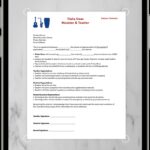Remote Control (RC) cars are a fantastic hobby, offering endless opportunities for customization and innovation. Imagine taking your RC car to the next level by equipping it with a laser scanner. This combination opens up exciting possibilities, from autonomous navigation to creating detailed 3D maps of your surroundings. However, raw data from laser scanners can be noisy and require refinement before it can be used effectively, especially for tasks like laser cutting components for your RC car project.
The Challenge of Raw Laser Scan Data
Just like scanning a physical object with a flatbed scanner, the initial output from a laser scanner mounted on an RC car can be less than perfect. You might encounter extraneous data points and imperfections that obscure the true shape and detail you’re trying to capture. These imperfections can stem from various sources, including ambient light, surface textures, and the scanner’s inherent limitations. Therefore, cleaning up this data is a crucial step in leveraging laser scanning for precision tasks.
Step-by-Step Cleanup Process with GIMP
One effective approach to cleaning up laser scan data, particularly when dealing with 2D representations or preparing images for laser cutting, involves using a powerful image manipulation program like GIMP. The process begins by isolating the scan data and removing unwanted noise. A practical technique is to use the eraser tool in GIMP to carefully eliminate stray points and artifacts around the primary shape captured by the scanner.
Initially, you might directly erase unwanted areas. However, a more refined method involves using layer masks. By creating a mask layer in GIMP, you can non-destructively hide or reveal parts of the scan data. This allows for greater precision and flexibility during cleanup. Imagine using a brush on the mask layer – painting with black to erase (hide) noise and white to restore (reveal) desired scan data. This masking technique proves especially useful for cleaning up intricate details and holes within the scanned shape, ensuring a cleaner representation of your laser scan.
Refining for Laser Cutting with Inkscape and LightBurn
Once the initial cleanup is complete in GIMP, the refined scan data can be further processed using vector graphics software like Inkscape. Inkscape allows for edge detection, converting the raster image from GIMP into vector paths. This is essential for laser cutting, as laser cutters operate on vector paths. After edge detection, it’s beneficial to examine the node view in Inkscape to identify and eliminate any remaining imperfections or stray nodes that might have been missed in GIMP.
Finally, the cleaned and vectorized scan data can be imported into laser cutting software like LightBurn. LightBurn is designed to work seamlessly with laser cutters, allowing you to prepare your design for cutting with precise control over laser parameters. This workflow, starting from raw laser scan data and culminating in LightBurn, enables the creation of custom components for your RC car projects, driven by the accurate measurements captured by the laser scanner.
Applications Beyond Laser Cutting
While preparing parts for laser cutting is a compelling application, RC car mounted laser scanners offer a much broader range of possibilities. They can be used for creating highly detailed 3D maps of environments, enabling autonomous navigation for RC vehicles, and even for educational purposes in robotics and mapping. By understanding the process of cleaning and refining laser scan data, you unlock the full potential of this technology for innovative RC car projects and beyond.

